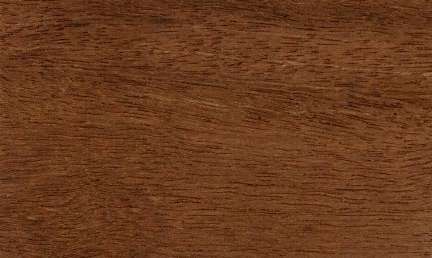
Meranti-gerutu (Parashorea lucida)
Family: Dipterocarpaceae
Common names: Chengal tiga banir, Damar, Damar cirik ayam, Gerutu, Gerutu gerutu, Icap, Katuko, Lemsa meluit, Meluit, Meranti gerutu, Meranti hitam, Meranti putih, Meranti-gerutu, Red meranti, Surantih, Tambun ranggas, Tengkawang pasir, Timbalon
Distributed in: Brunei, Indonesia, Malaysia, Myanmar (Oceania and S.E. Asia)
Distribution overview: This species is one of three in the Parashorea genus that are reported to occur in the Malay Peninsula. The other two are P. densiflora and P. globosa . Their distribution is restricted and they are comparatively rare.
Common uses: Boat building (general), Boat building, Boat building: framing, Boxes and crates, Bridge construction, Cabinetmaking, Construction, Flooring, Furniture, Heavy construction, Joinery, Light construction, Paneling, Particleboard, Plywood, Poles, Pulp/Paper products, Railroad ties, Vehicle parts, Veneer
Product sources: It is considered to be of little or no economic importance as a source of timber because of its scarcity.
Environment profile: Data source is World Conservation Monitoring Center
This species is Vulnerable within its natural growth range and may move into the Endangered classification if current trends persist. These trends include decreasing population due to over-exploitation, extensive destruction of natural habitat, uncertain future security due to severe depletion, and threat from serious adverse environmental factors currently existing in growth range and which has the potential to drastically reduce species population
Tree size: Trunk diameter is 100-150 cm
Colors: the heart isRed, Yellow to golden-yellow to orangeand the sapwoodBrown, White to yellow.The grain isWavy, the textureMedium coarse to coarseand the lusterLustrous
Planed surfaces are somewhat lustrous.
Natural durability: Susceptible to insect attack, Susceptible to marine borer attack
Odor: No specific smell or taste
Silica Content: High
LightInduced Color Change: Darker
Kiln Schedules: UK=C US=T3C2/T3C1 Fr=3
Drying Defects: Slight twist/warp, Splitting
Ease of Drying: Moderately Difficult to Difficult
Tree Identification: Bole/stem form is buttressed
Blunting Effect: High to severe
Boring: Easy
Cutting Resistance: Easy to saw
Gluing: Fairly Easy to Very Easy
Mortising: Finishes well
Moulding: Fairly Difficult to Very Difficult
Movement in Service: Fairly Difficult to Very Difficult
Nailing: Easy to nail, Pre-Boring Recommended
Planing: Planes well, to a good finish
Resistance to Impregnation: Resistant sapwood
Response to hand tools: Easy to machine
Veneering qualities: Difficult to veneer
Steam bending: Very poor
Screwing: Easy to screw
; Turning: Good results
Staining: Finish is generally good
;
- Numerical data Metric
- Numerical data English
- Strength properties
- References
 |
 |
 |
 |
| Item |
Green |
Dry |
Metric |
| Specific Gravity |
|
|
|
| Density |
|
705 |
kg/m3 |
| Bending Strength |
654 |
1024 |
kg/cm2 |
| Crushing Strength |
485 |
699 |
kg/cm2 |
| Hardness |
|
451 |
kg |
| Impact Strength |
|
71 |
cm |
| Shearing Strength |
|
109 |
kg/cm2 |
| Stiffness |
152 |
175 |
1000 kg/cm2 |
| Tangential Shrinkage |
|
|
% |
| Radial Shrinkage |
5 |
|
% |
| Weight |
689 |
544 |
kg/m3 |
| Maximum Load |
|
|
cm-kg/cm3 |
| Toughness |
|
|
cm-kg |
| Static Bending |
|
|
kg/cm2 |
|
 |  |  |  | | Item | Green | Dry | English | | Bending Strength | 9310 | 14566 | psi | | Density | | 44 | lbs/ft3 | | Hardness | | 995 | lbs | | Impact Strength | | 28 | inches | | Maximum Crushing Strength | 6899 | 9945 | psi | | Shearing Strength | | 1560 | psi | | Stiffness | 2167 | 2494 | 1000 psi | | Weight | 43 | 34 | lbs/ft3 | | Radial Shrinkage | 5 | | % | | Tangential Shrinkage | 8 | | % | |
Density (dry weight) = 38-45 lbs/cu. ft.
Density (dry weight) = 46-52 lbs/cu. ft.
Density (dry weight) = 53-60 lbs/cu. ft
Density (dry weight) = 31-37 lbs/cu. ft.
Shrinkage, Tangential = fairly large
Toughness-Hammer drop (Impact Strength) = low
Shrinkage, Tangential = large
Shrinkage, Radial = moderate
Shrinkage, Radial = large
Shrinkage, Radial = fairly large
Shearing strength (parallel to grain) = low
Modulus of Elasticity (stiffness) = high
Max. crushing strength = high
Hardness (side grain) = soft
Bending strength (MOR) = medium
Weight = heavy
Shrinkage, Tangential = small
Shrinkage, Tangential = moderate
Shrinkage, Radial = very small
Density = high
Mechanical properties of material from Burma and Malaysia are very similar, but timber from Borneo is rated as inferior in all strength properties. The strength properties of Meranti-gerutu are intermediate between those of heavy Red meranti and White meranti
Brown, W.H.,1978,Timbers of the World, No. 4 South East Asia,TRADA, Red Booklet SeriesChudnoff, M.,1984,Tropical Timbers of the World,U.S.A. Department of Agriculture, Forest Service, Forest Products,Laboratory, Madison.Desch, H. E. 1957. Manual of Malayan Timbers - Volume I. Malayan Forest Records, No. 15. Malaya Publishing House Ltd., Singapore.Desch, H.E.,1954,Manual of Malayan Timbers (2 vols,Malayan Forest Records,no.15Fundter, J.M.,1982,Names for Dipterocarp timbers and trees from Asia,Pudoc, Wageningen, NetherlandsI. Soerianegara and R.H.M.J. Lemmens (Editors,1993,Plant Resources of South-East Asia 5,(PROSEA, 1,Timber trees: Major commercial timbers,Pudoc Scientific Publishers, Wageningen 1993Keating, W.G., Bolza, E.,1982,Characteristics properties and uses of timbers. South East Asia, Northern,Australia and the Pacific,C.S.I.R.O. Div. Chemical Technology,Inkata Press,1Lee, Y.H., et al,1974,Commercial Timbers of Peninsular Malaysia,Kuala Lumpur Malaysia Department of Forestry Peninsular Malaysia and,Malaysian Timber Industry BoardLee, Y.H., Lopez, D.T.,1968,The Machining Properties of some Malayan Timbers,Malayan Forester,3,pp194-210Thomas, A.V.,1936,Timber Tests - Gerutu-genitu (Parashorea luada (Miq) Kurz,Malayan Forester 5 pp24-8WCMC. 1992. Conservation Status Listing: Trees and Timbers of the World. World Conservation Monitoring Center (WCMC, Plants Program, 219 Huntingdon Road, Cambridge, CB3 ODL, United Kingdom.
|








